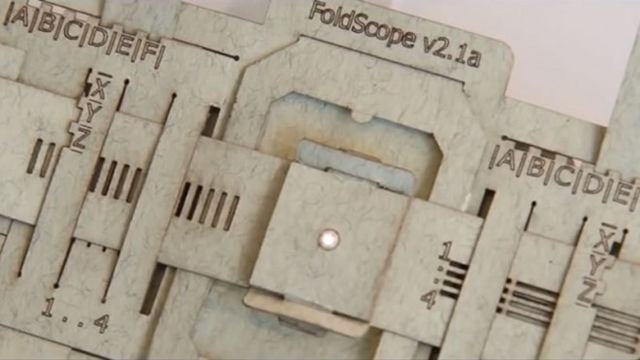Sometimes, you look at new technology and go: “Wow, that’s a cool invention that will better my life, made with actual scientific principles and logical processes that I understand.” Other times, you look at new technology and go:

The latter reaction is appropriate when you learn that a group of Stanford students have successfully constructed a working microscope out of origami folding paper and other components that altogether cost less than a dollar, for example. And not only does the microscope work, but its use could revolutionize the way we approach healthcare.

Just, HOW. Will somebody with a higher IQ than me just please explain how this is possible, because my brain is doing cartwheels.
Created by Stanford student Manu Prakash and friends, the microscope—which they call the Foldscope—can provide “over 2,000 magnification with submicron resolution,” and is “small enough to fit into a pocket.” The Foldscape also needs no external power source, weighs practically nothing, and can survive being dropped from a 3-story building.
Oh yeah, and building it takes less than ten minutes and doesn’t cost you more than a dollar, because Manu Prakash and his friends are clearly sorcerers . All that’s needed to create the Foldscape is a flat sheet of paper, a tiny $0.56 lens, a $0.06 3V button battery, a $0.21 LED and a small switch. Oh, and tape.
The Foldscape could led to intriguing new advancements for both education and medicine fields. Considering there are quite literally packets of gum that cost more than this creation, the educational benefits pretty much speak for themselves. As for healthcare, foldable microscopes have a staggering amount of uses, especially since they could eventually be made disease-specific.
According to Prakash and his team, modern day manufacturing could allow the Foldscape to be produced on a “huge scale,” so there are no problems in that department. While we have no idea when we’ll be seeing the Foldscape in real life, its creators are determined that we will, and I for one am excited about it.
I mean I’m still crying sorcery, but at least they’re using their powers for good.
Source MIT Technology Review
Advertisement






